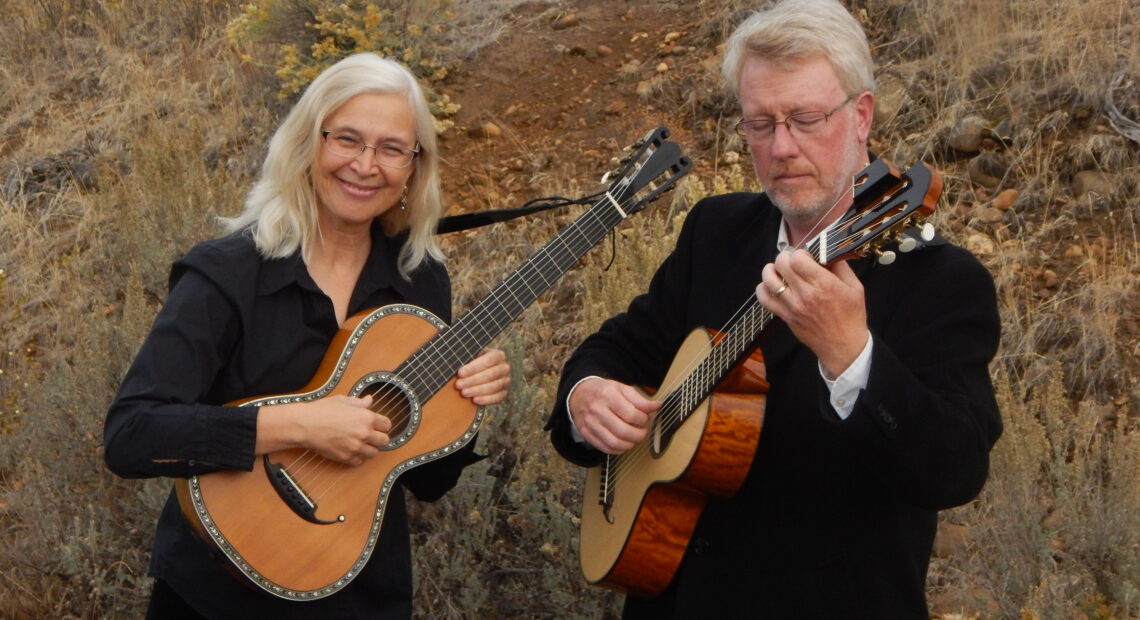
New guitar composition evokes formation of the Grand Coulee
Listen
(Runtime 3:39)
Read
The Channeled Scablands of Eastern Washington couldn’t be further away from waterfront property. But at the end of the last ice age, the area was, at times, underwater. Torrential flooding cascaded through the area and created the current landscape, including the Grand Coulee.
Some 15,000 years later, that geological gravitas has inspired a composition for guitars.
The idea came from a conversation between the guitar duo, Neil and Tamara Caulkins and the mayor of Soap Lake at the time, Raymond Gravelle, about creating a suite inspired by the Grand Coulee, much like the orchestral, “Grand Canyon Suite” by Ferde Grofé.
“It was really quite a violent, catastrophic flood at the end of the ice age, and I think this piece captures that excitement quite well,” Tamara Caulkins said.
The six-movement suite, “Dry Falls” evokes that magnificence of nature through timing and melodic phrases. That’s a natural marriage for Caulkins, who said she thinks that art can give people a sense of place in the world.
“Nature can be very big and something that is much bigger than ourselves and we can just stand in awe,” Caulkins said. “So, I think great art does that, brings that sense of awe back into our lives.”
In 2020, Friends of the Lower Grand Coulee, an organization that strives to encourage the appreciation of and understanding of the region, granted the Caulkins guitar duo funding to solicit composer Martin Kennedy for the piece. The three set out on a bicycle trip, from which Kennedy took inspiration and composed the suite.
“When you’re there, you get that sense too, even though there’s no water there — Dry Falls — you just, you can see it, you can see where it was,” Kennedy said. “So, it’s really quite something.”
The suite is intimate, written for two guitars. Kennedy said it was an interesting challenge to translate the massive, thundering imagery of the past and present landscape into an intimate composition for just two string instruments.
“I liked that idea of these two relatively quiet instruments making a big noise or making a very kind of crystalline sound of the water, just the tiny ice thawing,” Kennedy said.
Each piece in the suite is subtitled to give the listener a clue as to what geological formation or process is being referenced through the music.
“I hope that when they’re listening to it, they can hear certain elements of where or how the region was created,” Kennedy said.
The Channeled Scablands in Eastern Washington includes Dry Falls and the Grand Coulee. It’s an area geologists worldwide study for its fascinating formation.
“The Channeled Scablands is fairly unique in that there were so many floods that came through,” said Bruce Bjornstad, a retired geologist who studied the Ice Age Floods.
Bjornstad said massive floods created the landscape people see today. The last of these occurred 15,000 years ago when an ice dam broke in what is now northern Idaho. Water from the glacial lake that the ice dam held up rushed through the landscape and carved out the scablands.
“There was this huge, torrential tributary moving at 65 miles-an-hour with ten times the flow of all the present day rivers in the world combined, tumbled over this wall and flowed south through the canyon below, eventually rejoining the westward flowing main channel of the Columbia itself,” said Roddy Scheer, the author of the guidebook, “Hiking Waterfalls Washington.”
Now that history is evoked in Kennedy’s composition. The Caulkins plan to record the suite in Ellensburg in June.
















